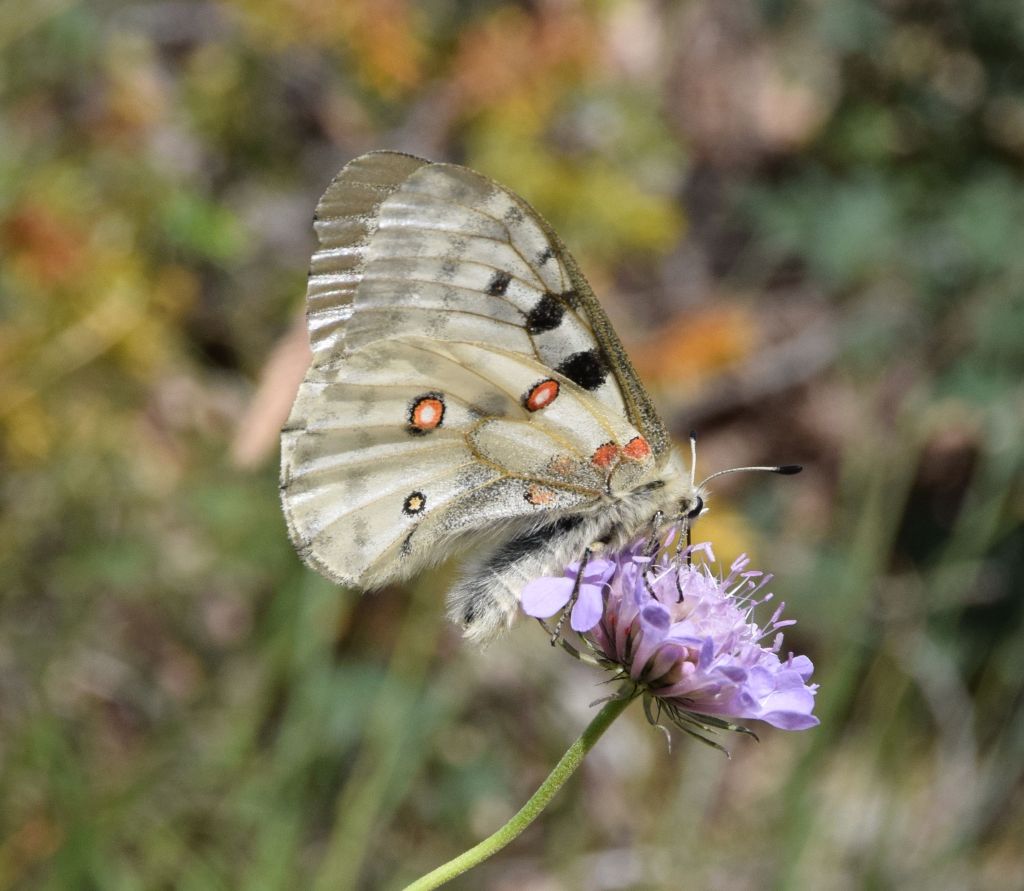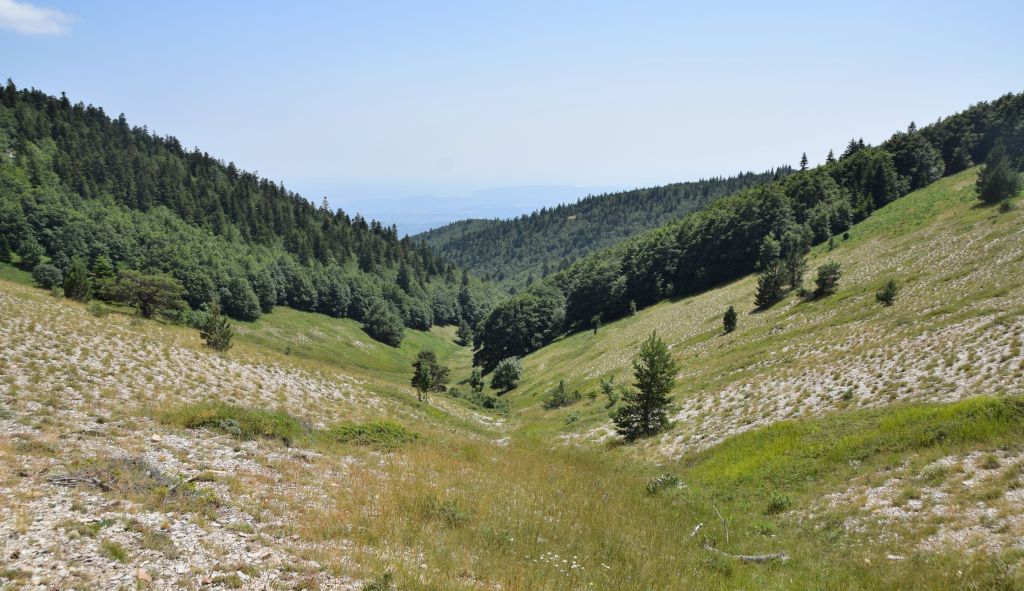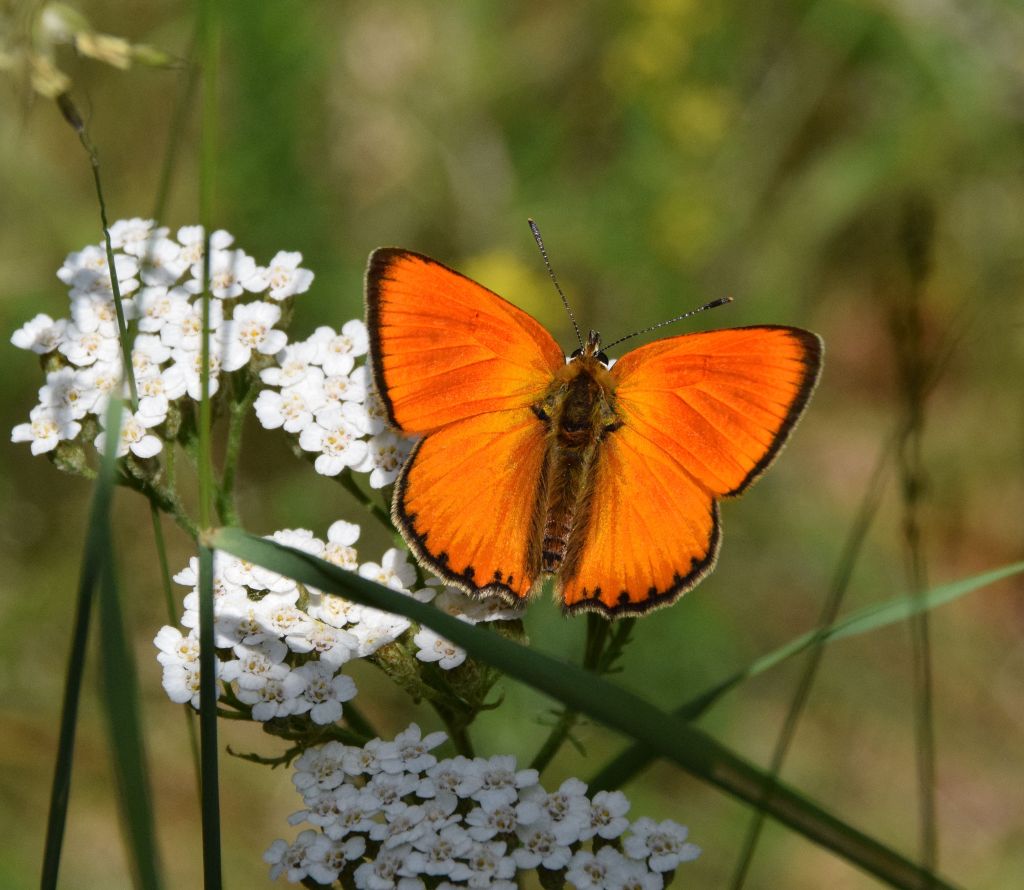My prime motivation in re-visiting this high peak (1826 m) site was to connect properly with the magnificent Apollo that I had observed here only at distance previously. I also wished to further experience the good range of resident Fritillaries, and had just liked the place sufficiently in July 2019 (see here) to come back for more.
Monday 17th began disappointingly when upon completing the long, winding climb by road up the mountain’s south side, a recalled profusion of large, Fritillary-laden Thistles below the car park at the closed Station de Lure just wasn’t there. The habitat looked like it had been recently cut and the plants also cleared during the interval since my first visit … why? And so I drove on to explore the deep gullies that run down from the mountain’s summit.
Apollo
Parking beside the lower of two such features I at first walked the mountain side above the road, where butterflies seemed quite sporadic except in one warm spot. The most frequent flyer, as it was throughout both days, was False Heath Fritillary (pictured below), a small species found mostly at altitude across much of continental Europe that I had observed for the first time here in 2019. This always hyper item flies in two broods in southern France from May to July, then August and September. So many of the highly variable, dark suffused subjects I continuously encountered were quite worn, though others surprisingly fresh. The flight pattern is very light and fluttery as these little butterflies buzz around endlessly without ever settling for long.

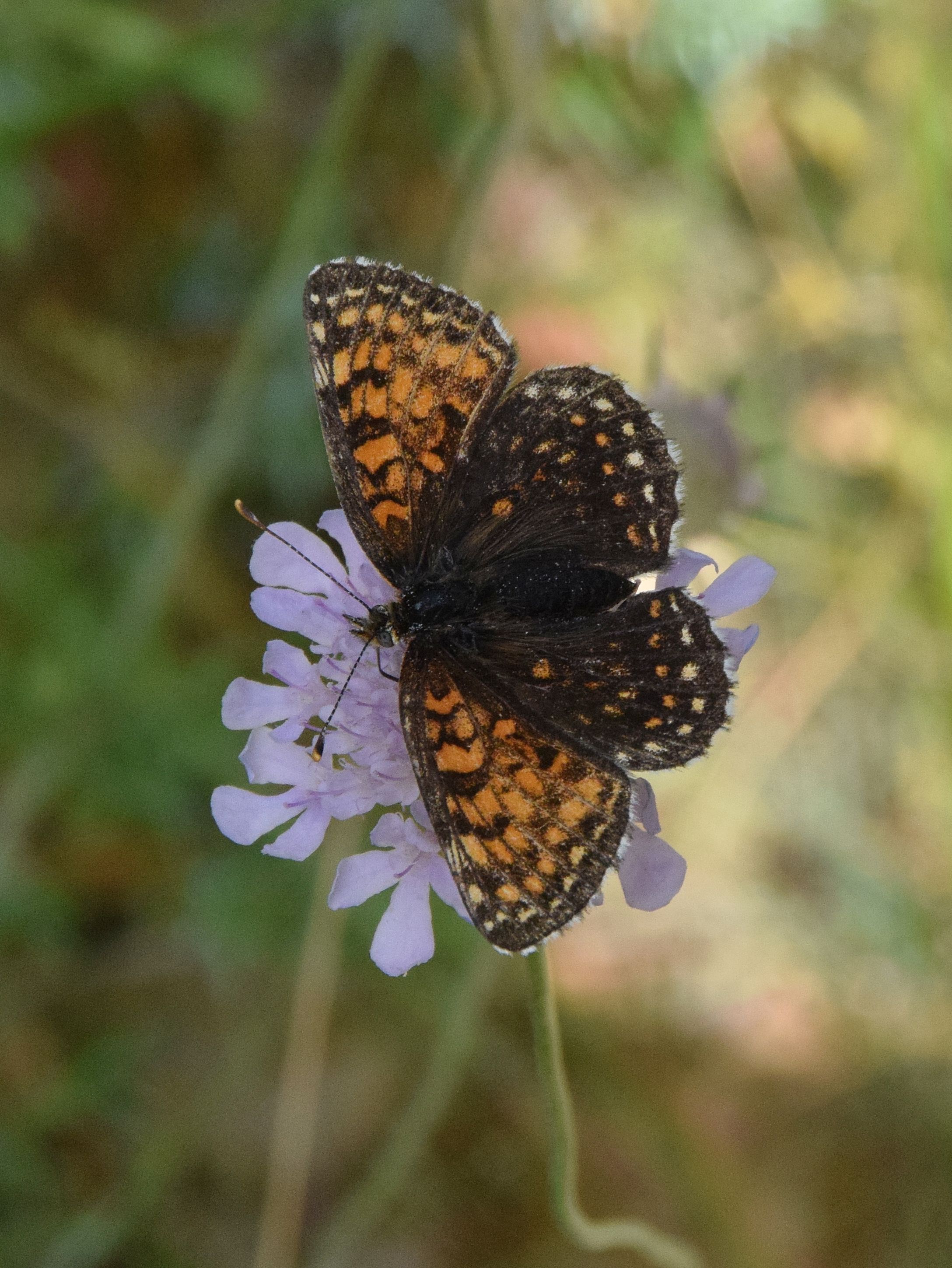
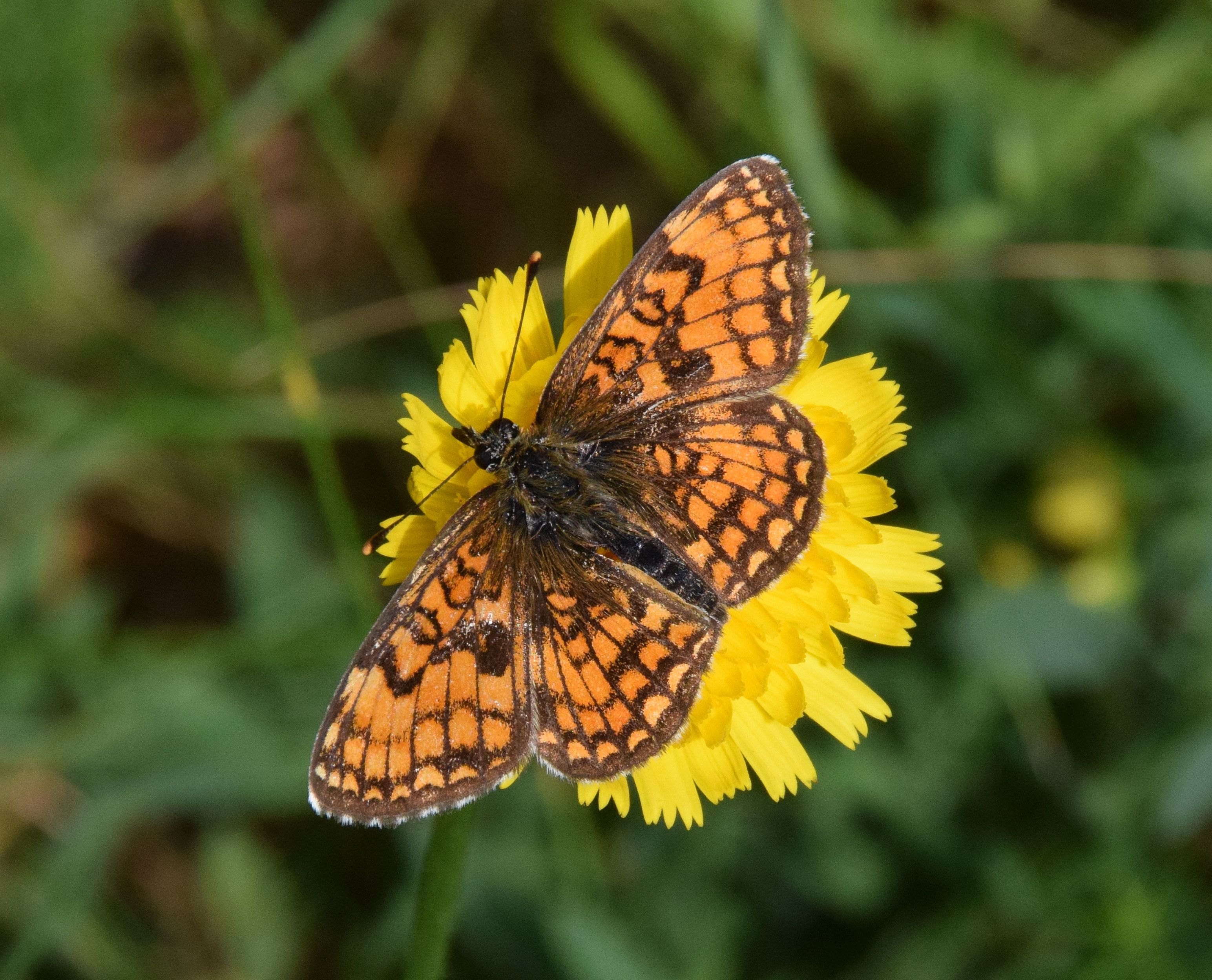
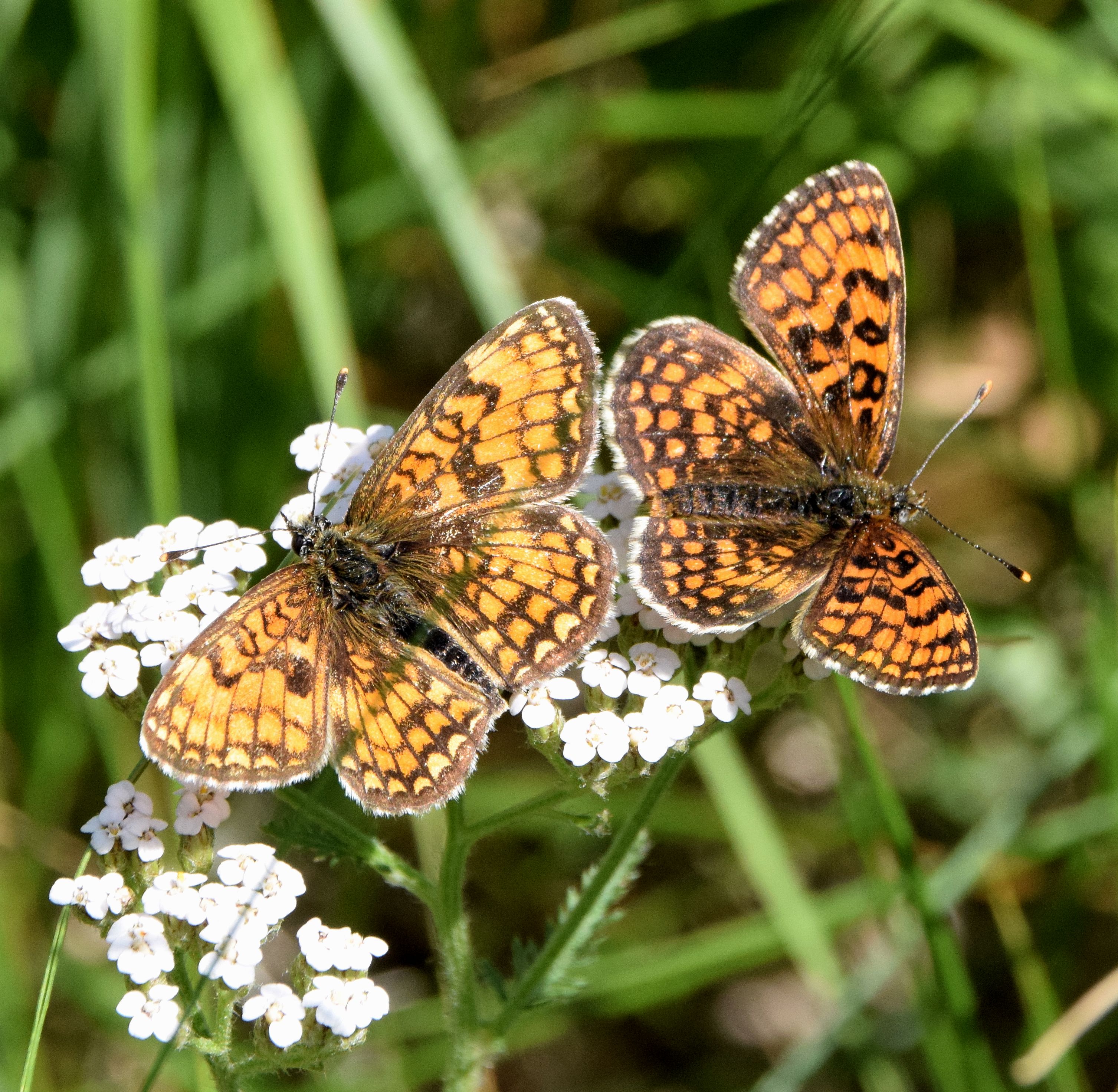

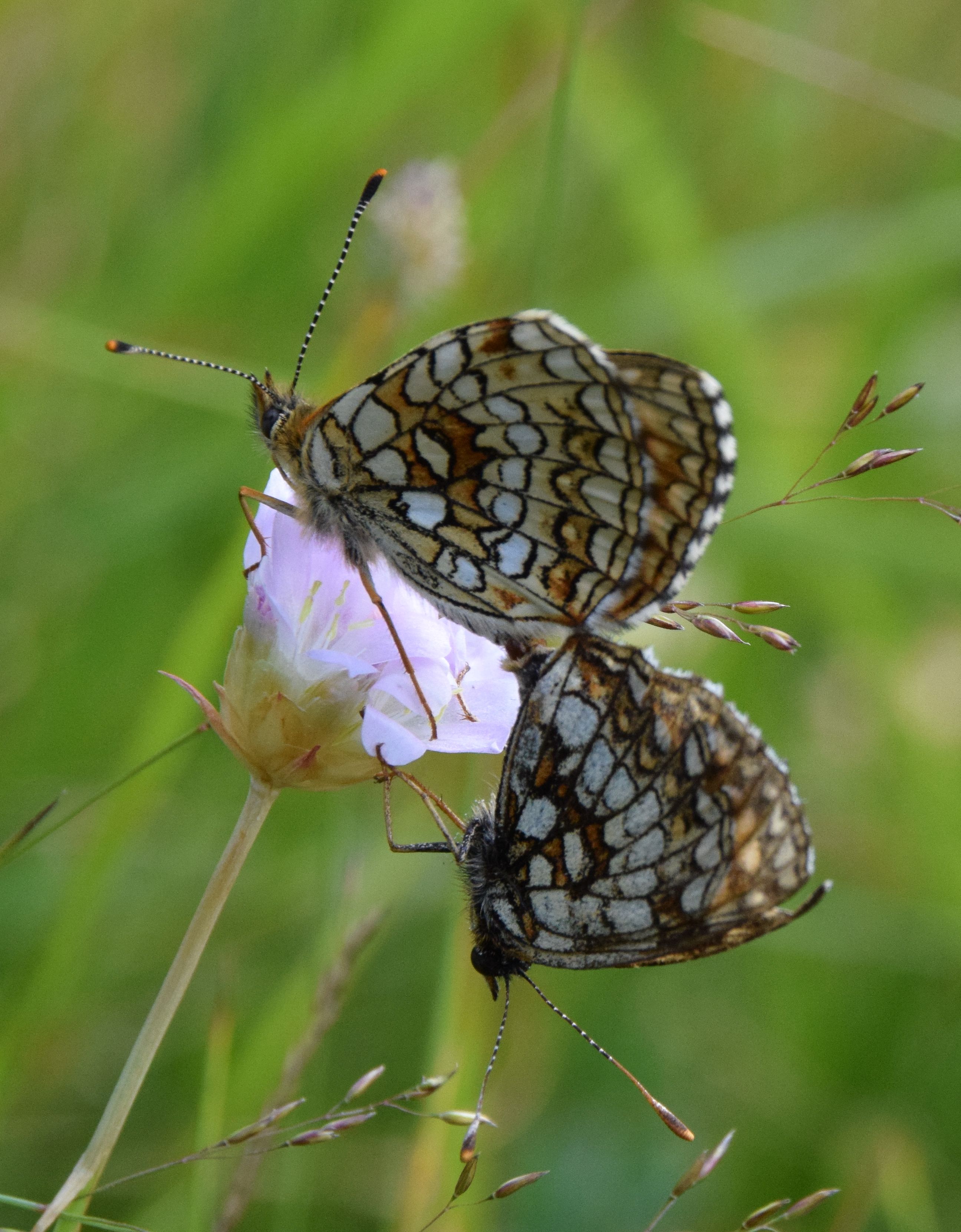
False Heath Fritillary
By midday I decided not to waste further time hanging around where I was and opted to probe into the deep gully below the road (pictured below). It soon became apparent this was a natural heat hollow: warm, wild flower rich and hence hosting plentiful butterflies. Big, floppy Apollo were gliding effortlessly around the scree-laden slopes as I progressed, settling always briefly to nectar and only once close to me, but the only pictures gained were too clutter filled. Onward and downward I moved amongst a teeming medley of Fritillaries, Heaths, Graylings, Skippers, Marbled Whites and Blues; and numbers of Arran Brown that I had encountered for the first time here in 2019.
Locations like this where such varied concentrations of butterflies occur just have to be found, and usually at random. Their natural warmth is detectable as soon as I wander into them, whether it is chalk downland at home or montane habitat abroad. On this occasion it had taken all morning to do so and the butterflies were by now fully fuelled up in the 30 plus degree early afternoon sunlight, the glare of which also impacted badly on the quality of images I could attain. Fritillaries in particular would zoom up and down without settling, as is usual in the full heat of the day. But two larger species Cardinal (below left) and High Brown Fritillary (right) both posed briefly if not satisfactorily for the camera.

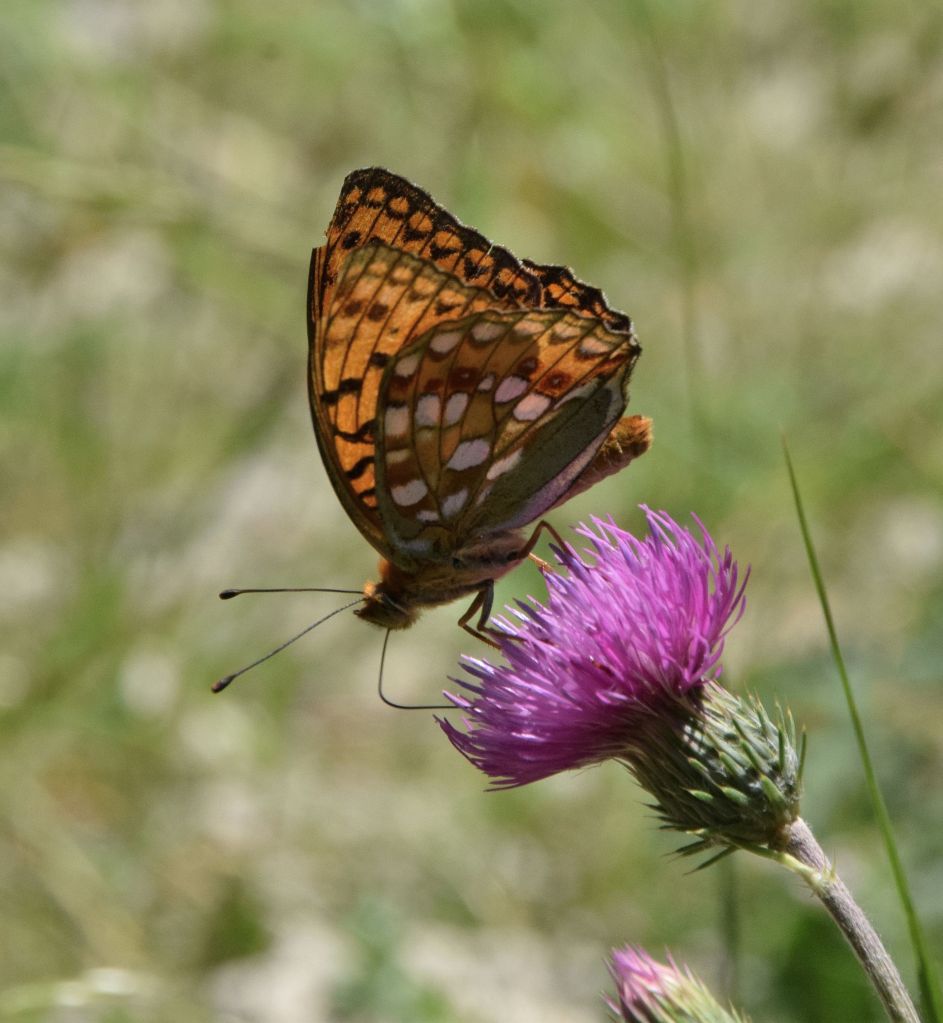
Little attention was paid to the Graylings, including Satyrs that were covered thoroughly in my 2019 Provence posts. I found just one Arran Brown then which was a lifer at the time. Today several were active around me and quite inclined to nectar for some time on the same flower, or bask. The chocolate-toned species may be distinguished from similar Ringlets by the chequered wing fringes and white streak on the unh, as the pictures (below) show. It occurs here at the western edge of its south and central European range, flying in a single brood from mid-July to late August. They favour woodland rides and sheltered, grassy clearings, often with bramble or bracken, at moderate altitude.
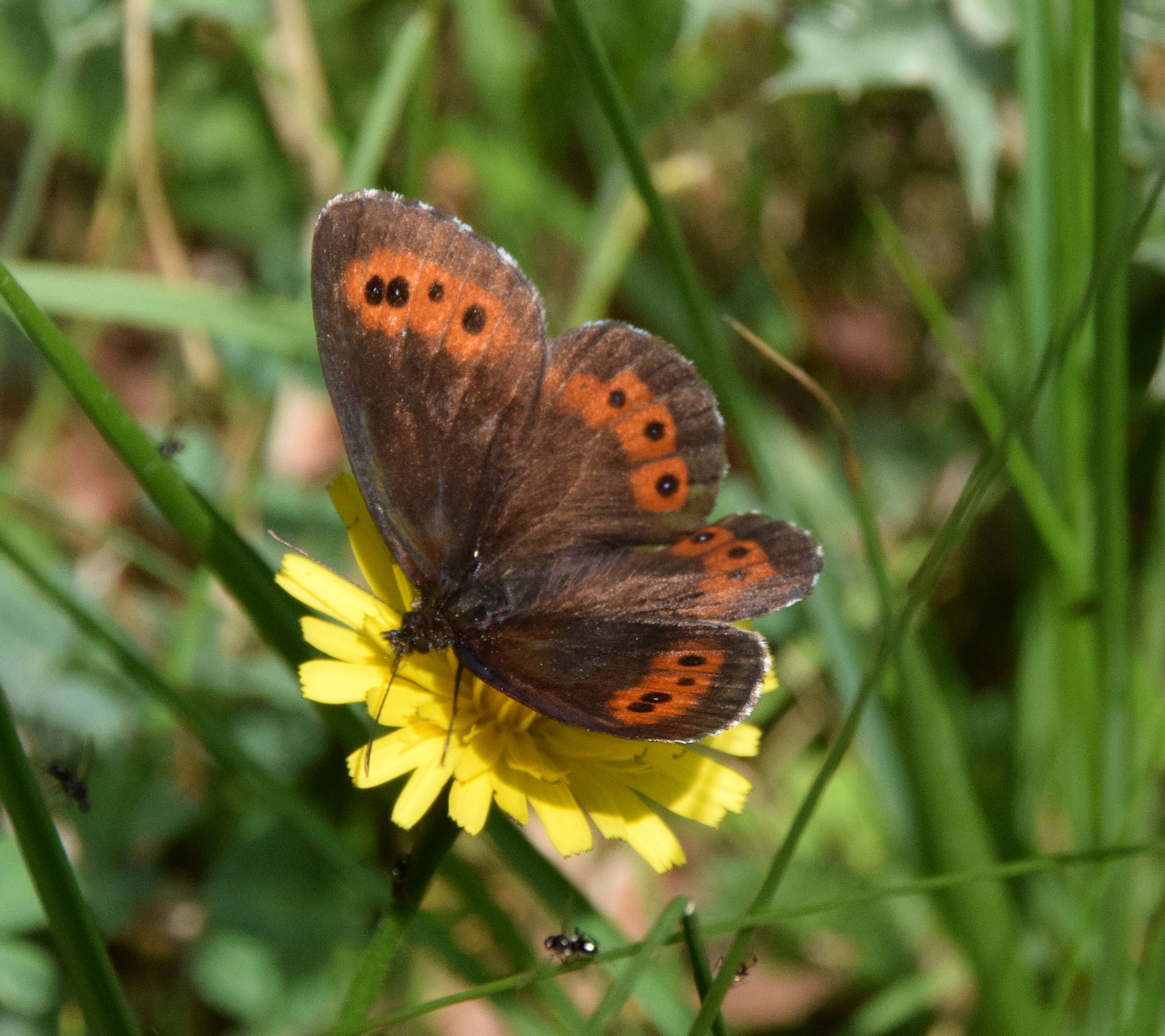
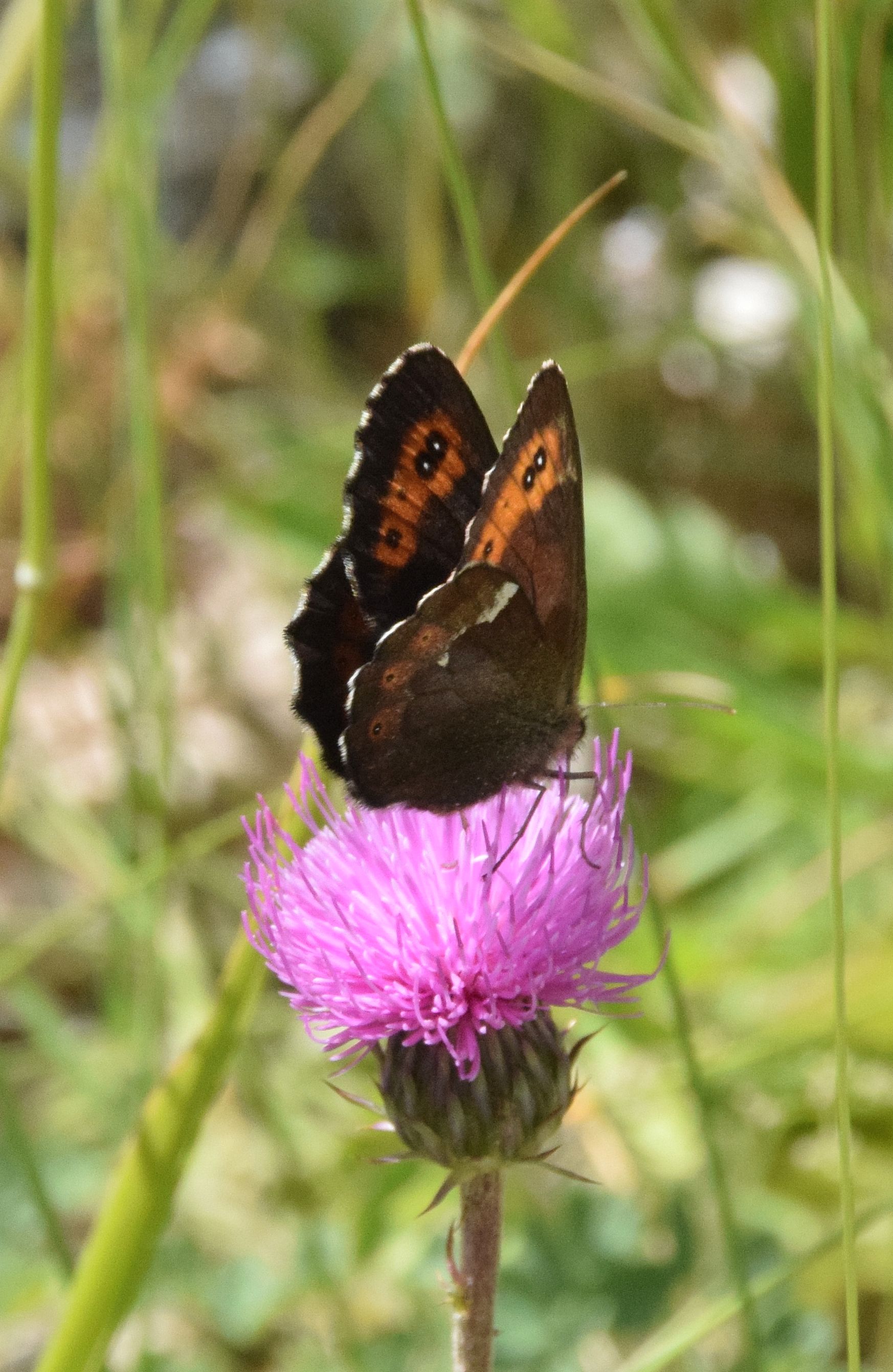
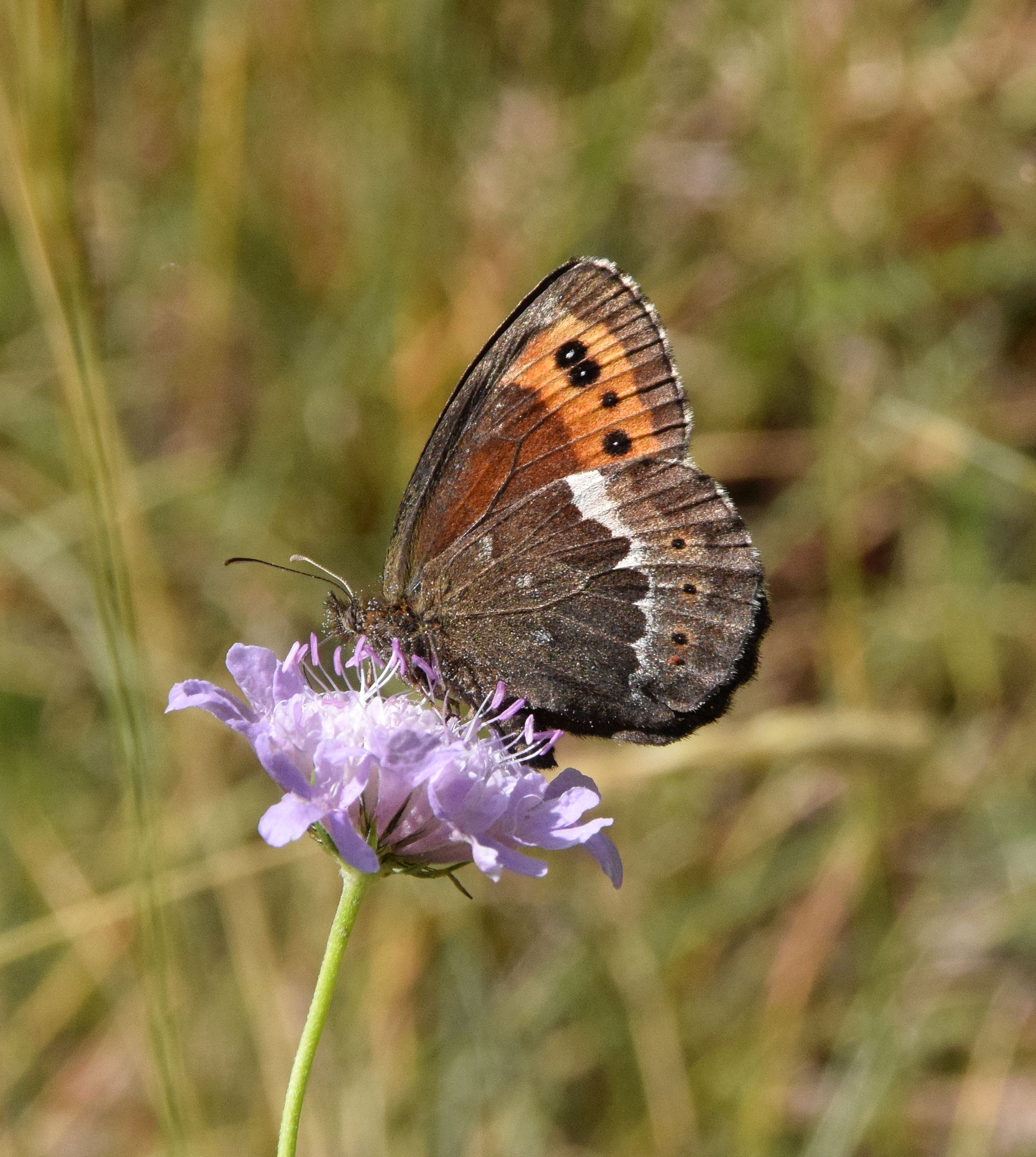
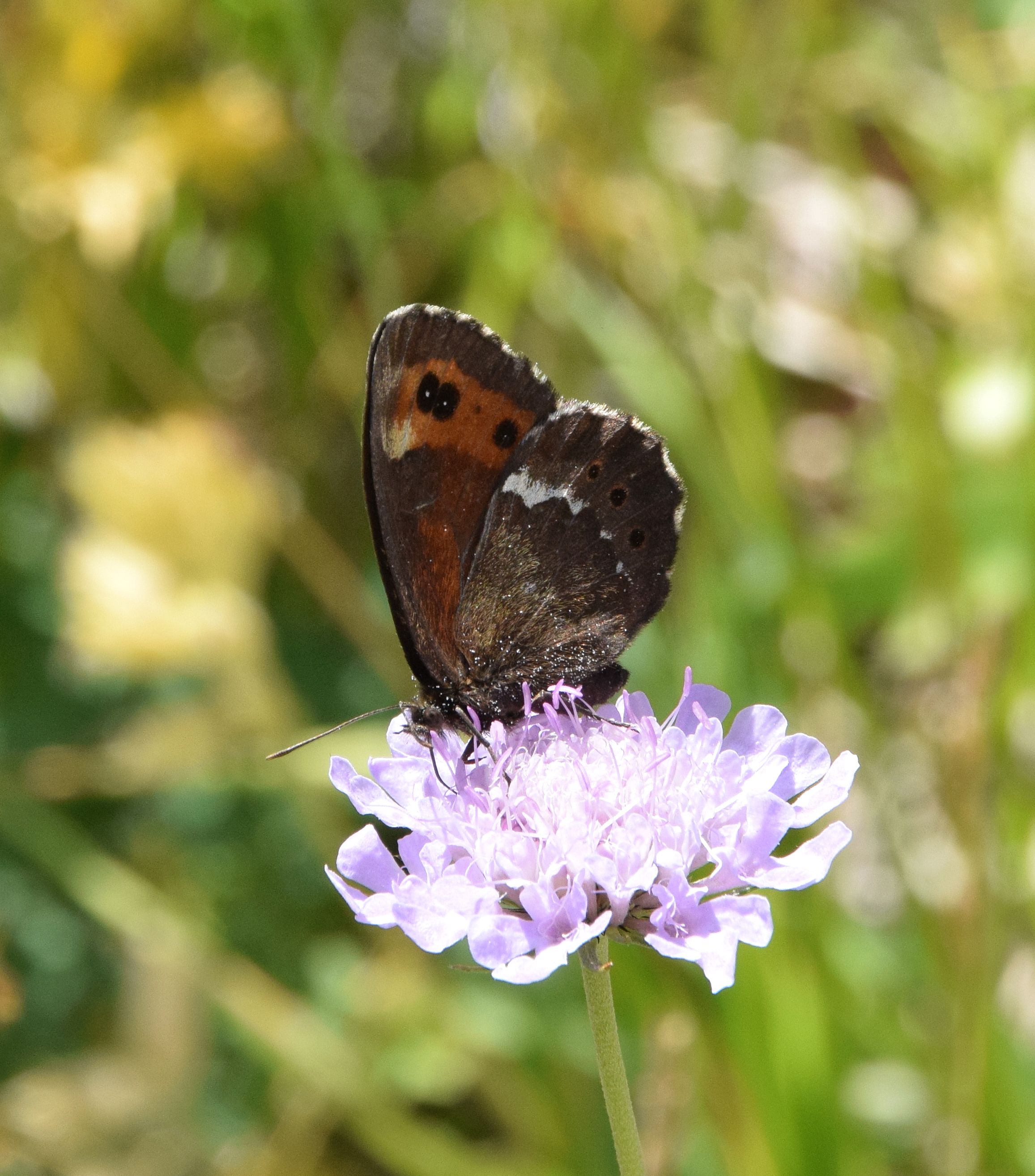
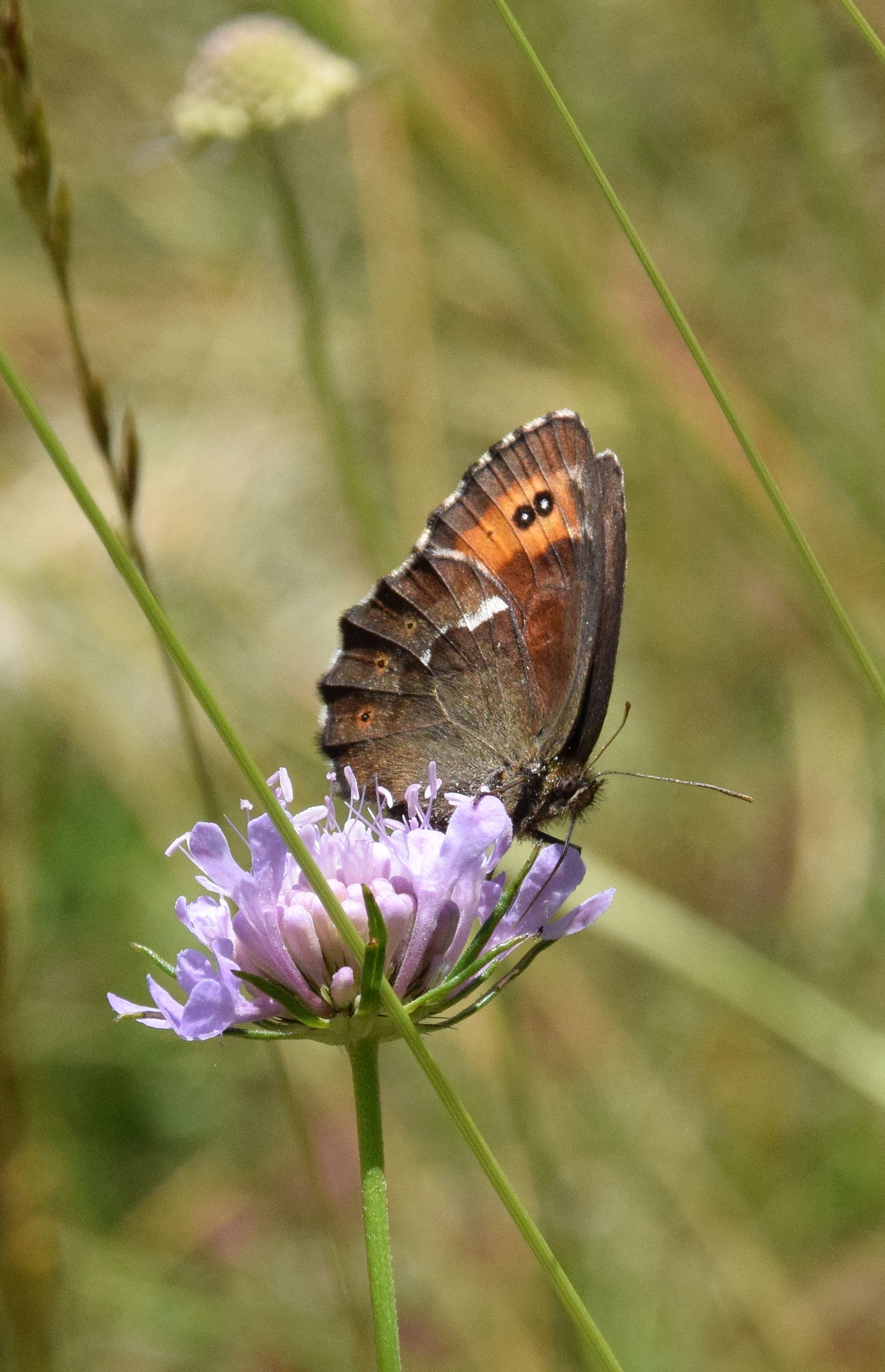
Arran Brown
Further down the gully, where it became wooded I gained a rather colourful lifer in the form of a territorial male Scarce Copper. The bright little denizen of montane flower meadows remained faithful to a 50-metre stretch in which it relocated constantly, challenging any and often much larger fly pasts that might invade its space. I would walk up and down waiting for it to re-appear in a variety of poses as it always did after a short interval. I was now enjoying one of the most strikingly coloured Coppers, with a vivid red-orange upper-side framed by jet black margins. The underside, captured below on this bright, sunny afternoon is also quite distinctive, with rows of black-centred white spots of varying size in the unh wings. Contrary to the name these jewels can be quite common in montane areas across southern Europe where they fly from June to September, peaking in July.
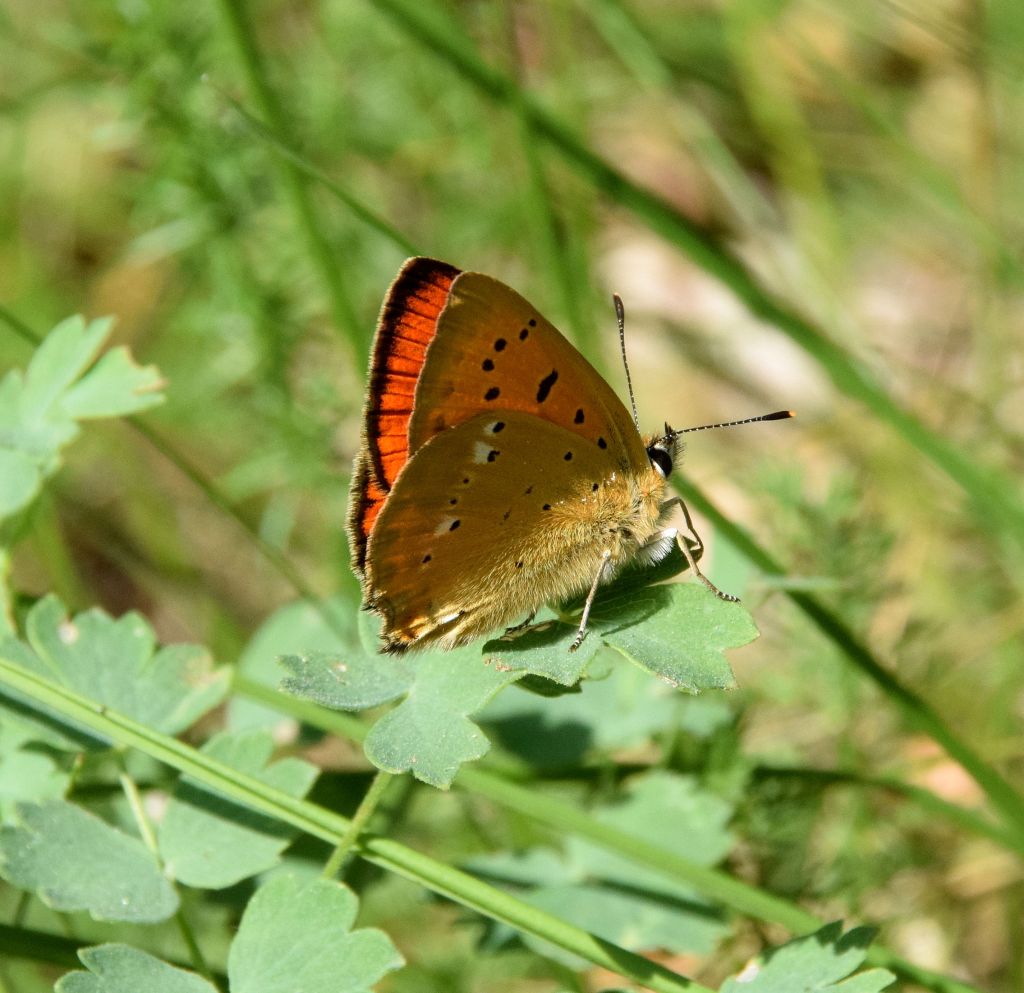
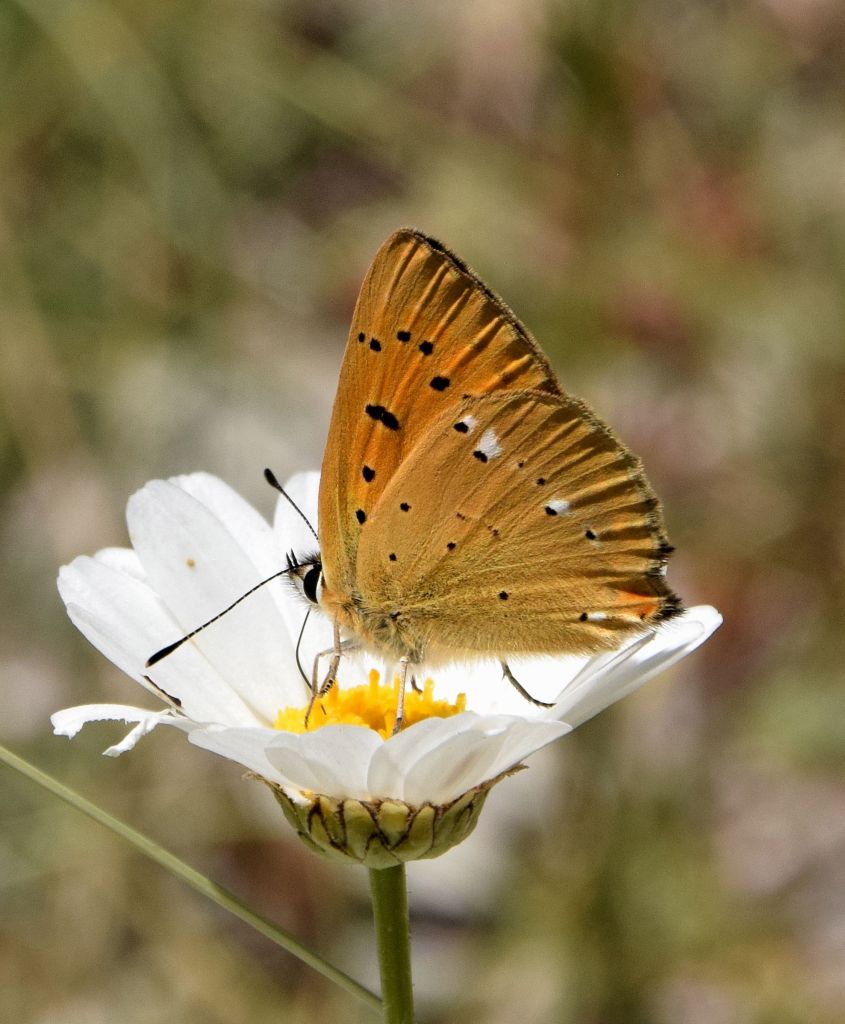
When things are like this – just me and butterflies in some remote location – I do not have another care in the world. Added interest was provided by regional species forms that I noted here. As in 2019 this site’s Turquoise Blue (below left) were of a localised variation showing delicate, pale orange marginal underwing spots with white chevron borders. Pearly and Small Heath were both represented in the gully, the latter being the southern European and north-west African Lyllus form that I had observed previously only in southern Portugal in 2014. But what of my day’s prime target, the magnificent Apollo?
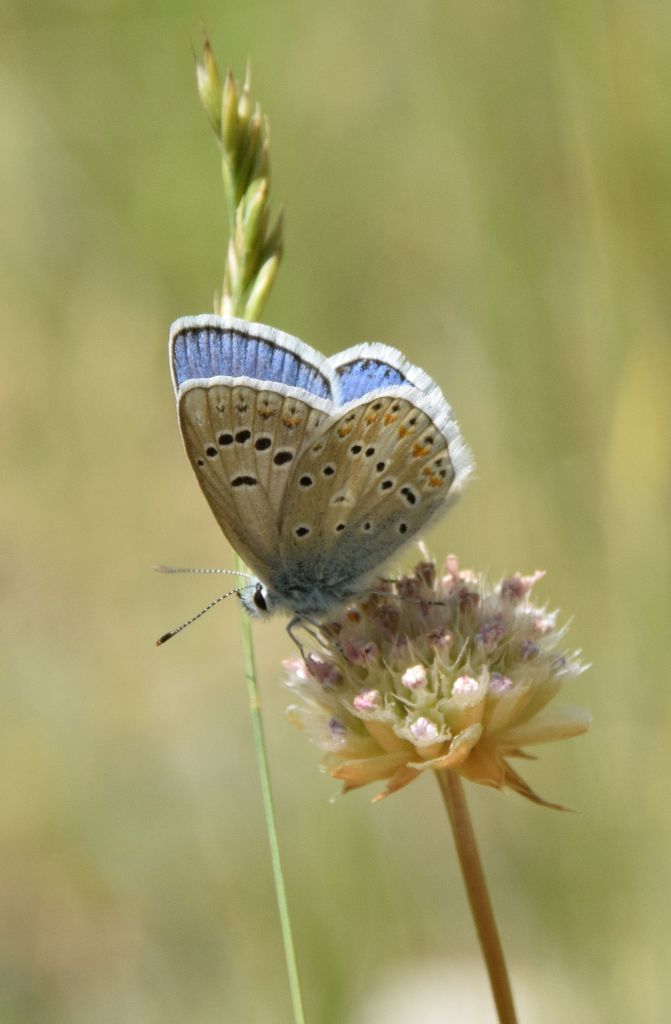
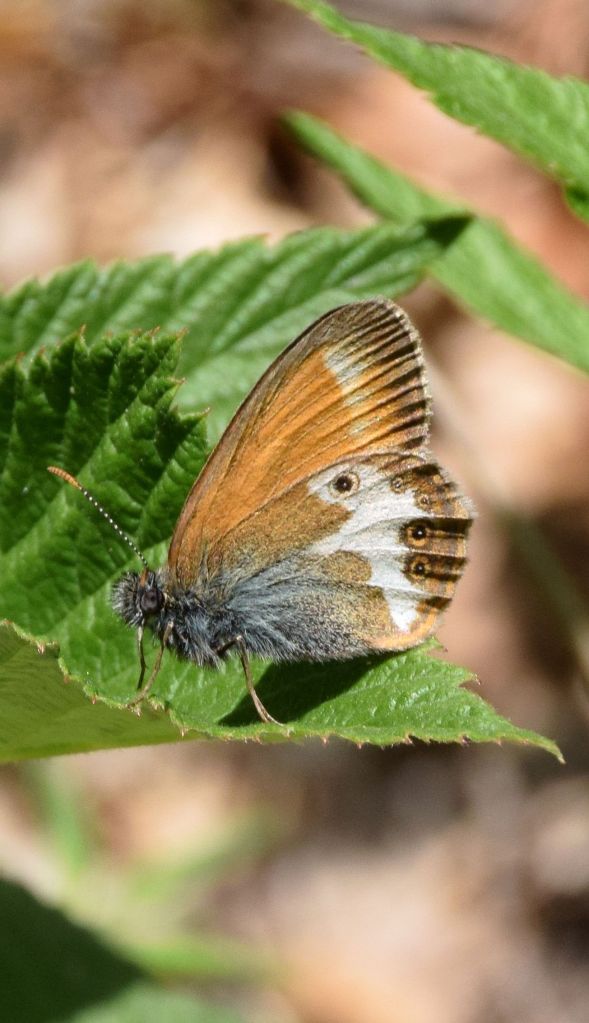
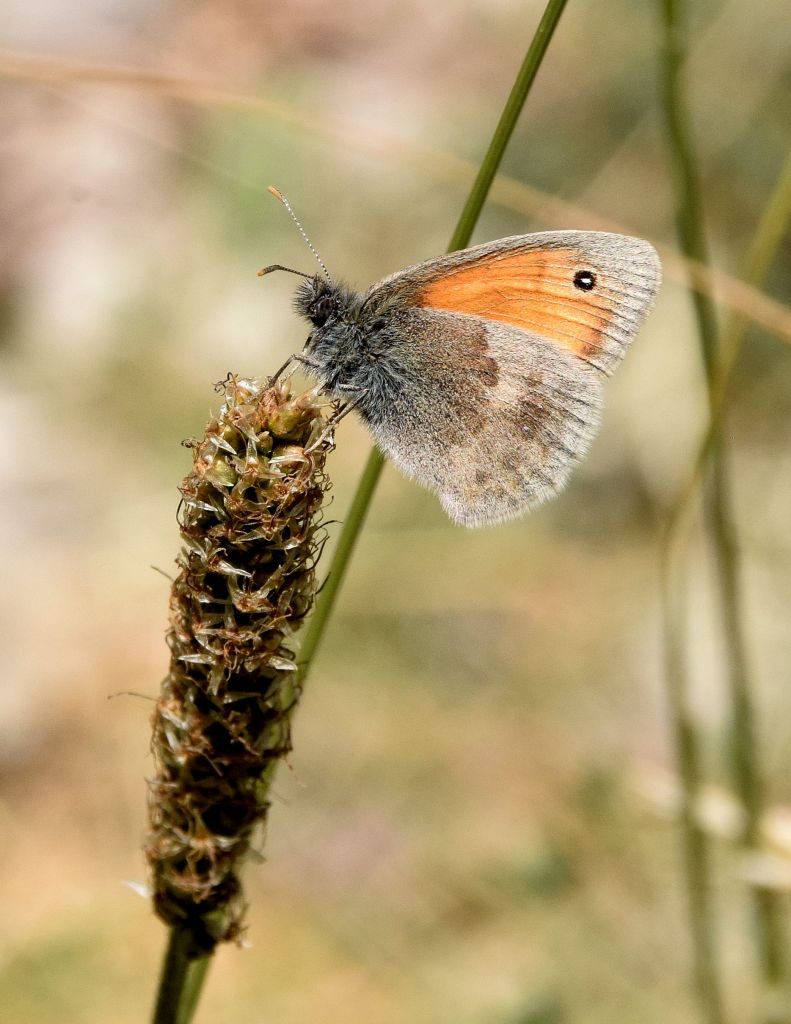
Later in the afternoon I moved further up towards the summit where a tributary gulley runs down into the one described above. Once again the fast flying forms of several Apollo were immediately visible and the issue was getting close enough to them to take acceptable pictures. Different Fritillaries were still far too warm and equally tricky. I only had time now for one walk down the gully then back up again, and as I went I wondered how many days it might take to gain the images I sought. Then, about two-thirds of the way back up, a fresh Apollo (pictured below) landed right beside me to nectar on Scabious then Thistle, and after these results the air was punched in excitement and relief.
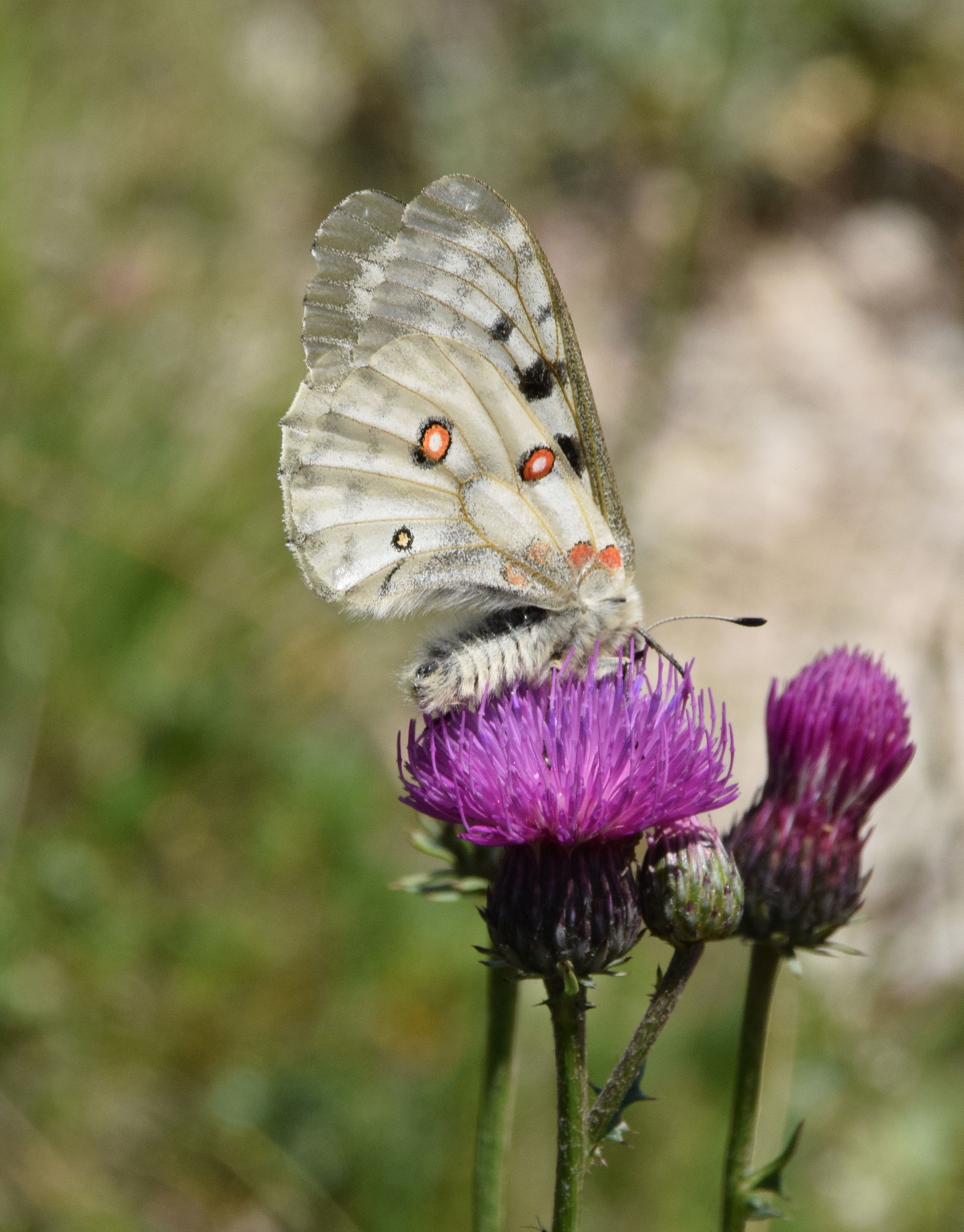

Apollo
The body size, wing shape, hairiness and markings all make this iconic Alpine butterfly a spectacular encounter. The markings, especially the red spots can be very variable between different populations, with many local forms, and females are usually larger sometimes with a greyish suffusion. As with the related species Clouded and False Apollo that I had experienced previously in Greece, the waxy wing edges become translucent as the butterflies age and their furry scales wear off. When this one eventually flew off again its place was at once taken by a High Brown Fritillary (below right) to round off my now very satisfactory day.
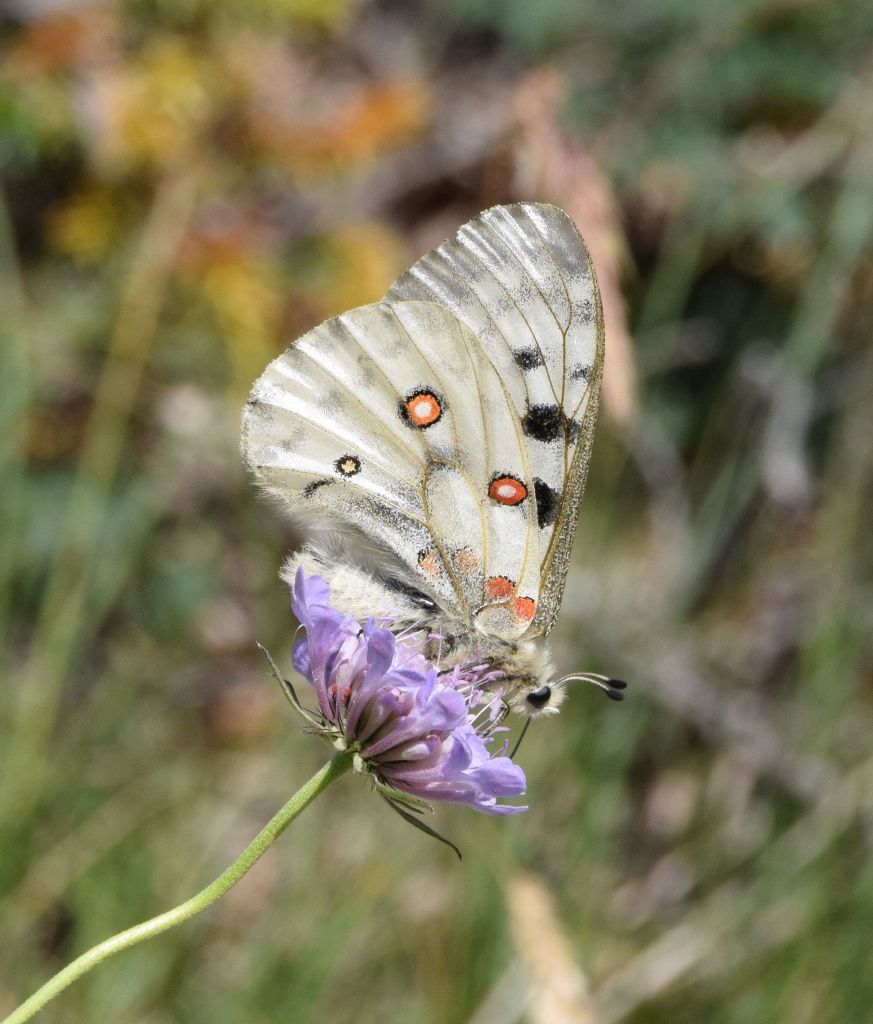
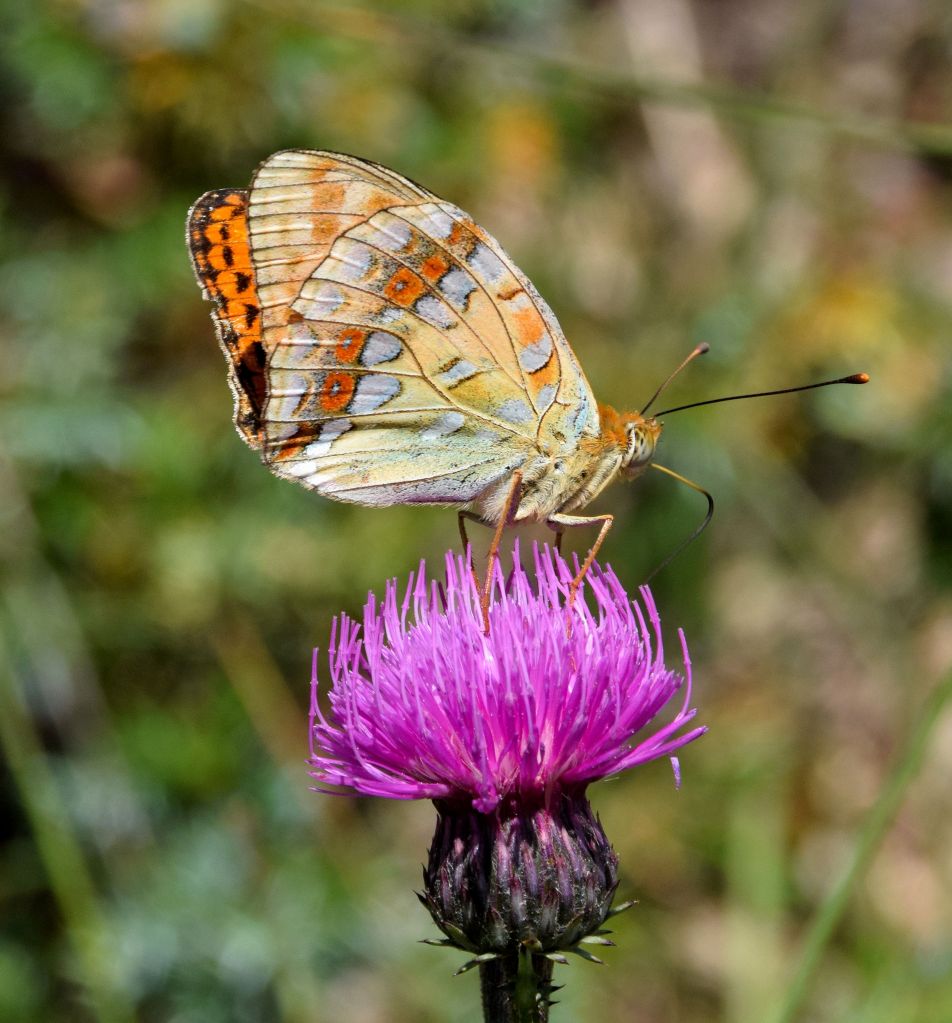
I returned here on Friday (21st) with the aim of recording the same butterflies and especially the Fritillaries in pictures as they warmed up with the day. Needing to return my hire car to Marseilles by 3pm (four hours ahead of the return flight) to avoid paying another full day’s rental, that gave me around three hours on site from 10am, and the plan worked very well. But the day before at an unproductive site I had finally suffered the trauma of losing my phone in the field, and was hence feeling distinctly out of sorts. Small wonder this has never happened before.
I can of course remember when we didn’t have these tiny hand-held computers that cater for so many needs. Then we had got on perfectly well without the dependency they create but now like anyone else thus rendered suddenly naked I felt lost, anxious and insecure; and the prospect of getting to the airport sans satnav hardly appealed. It is only now, five days later and re-equipped with a replacement phone that I am beginning to feel properly human again. Concentrating on the winged treasures in the lower gully on this final morning of the trip effectively kept my disagreeable condition in check.
The Scarce Copper (above) was faithful to exactly the same patch as four days earlier, and as then I kept walking up and down to dislodge it again then try to get close. It didn’t ever fly far but could display an uncanny knack of disappearing upon landing before flying up to challenge the next insect passer by. My modus operandi worked especially well with the fritillaries that like others of their genus at home are generally more approachable at this cooler time of day. These (below) are those that I now ID’d, while no more Apollo in presentable condition were encountered.
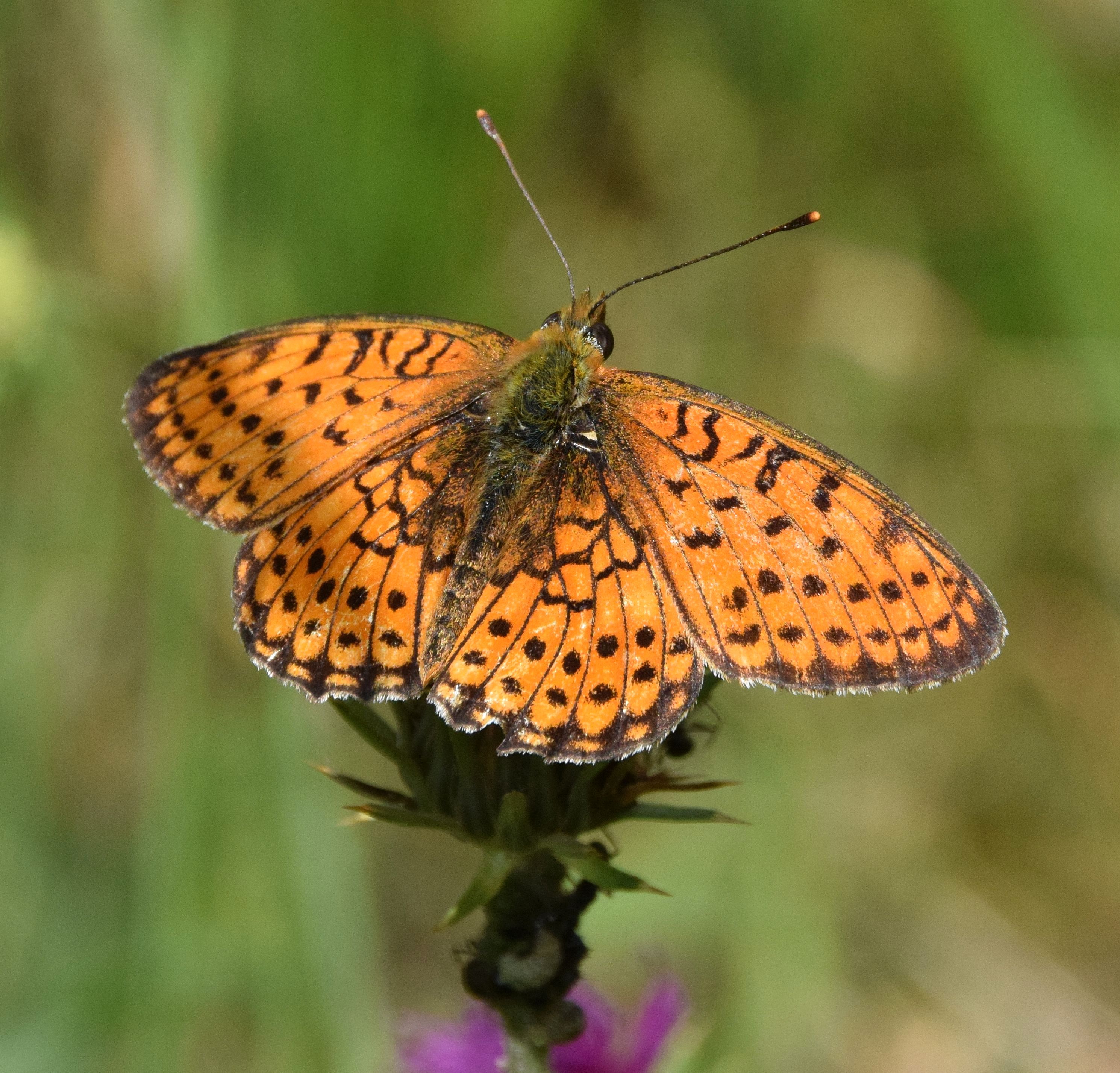
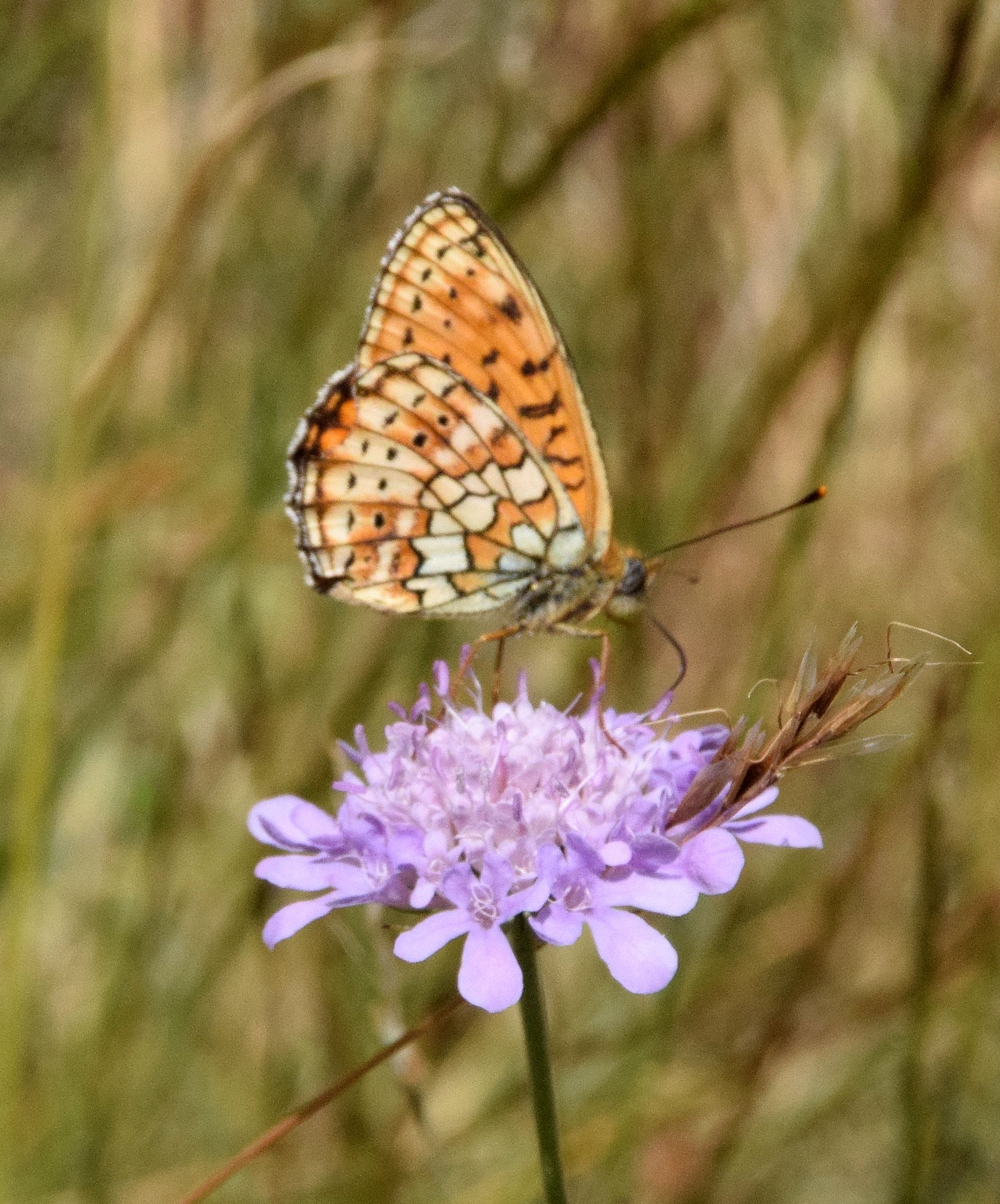
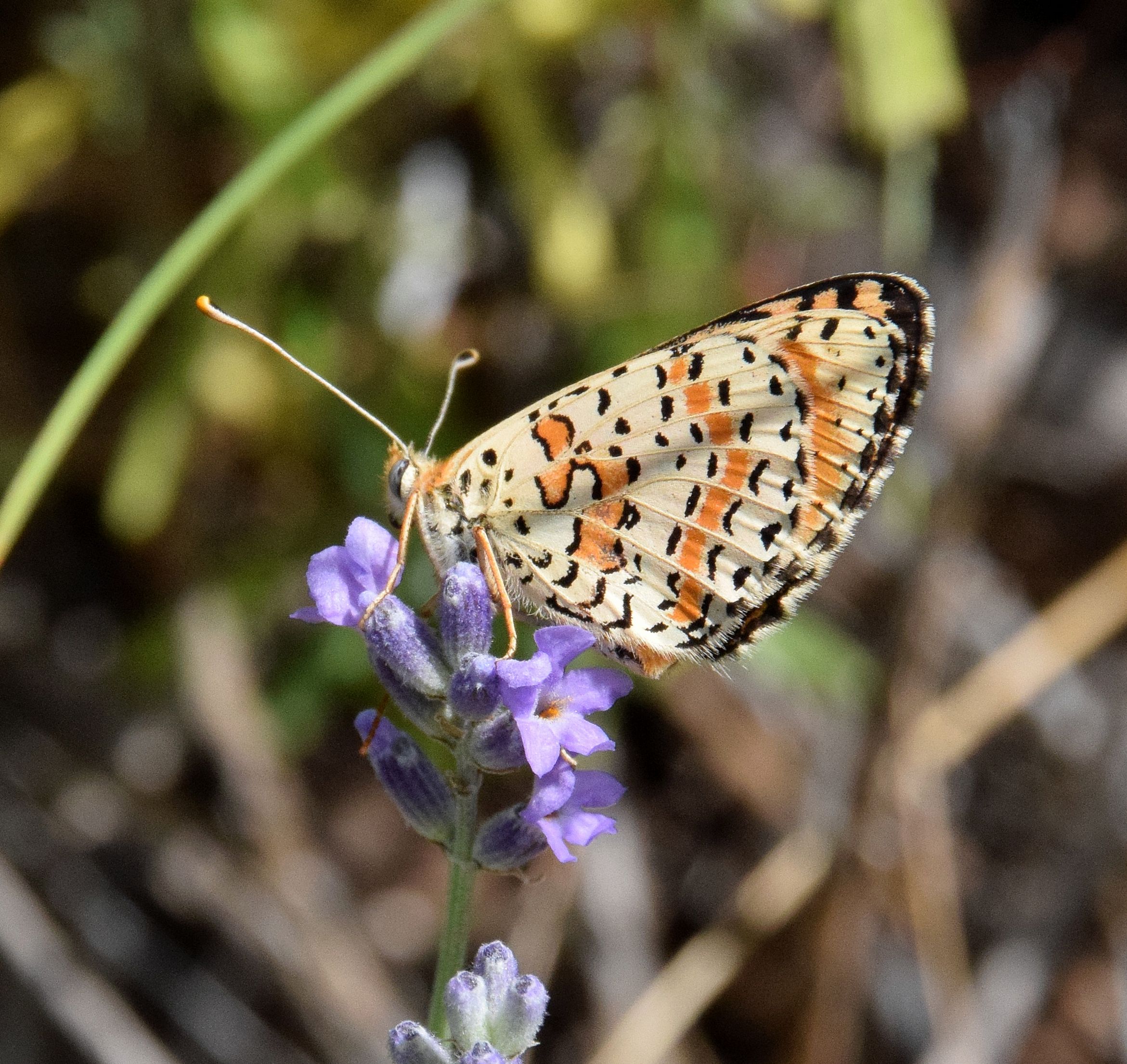


Top row: Marbled Fritillary – Bottom: Spotted, High Brown and Silver-washed
Of the above the most interesting was Marbled Fritillary, a largish orange-toned species with broad, rounded wings. I had recorded it before only at Station de Lure in 2019 but without satisfactory pictures. The top left upper-side study will now do nicely. This normally hyperactive butterfly is widespread and not uncommon through much of southern and central Europe. It favours woodland and bushy places where it is said to be seen rarely far from brambles, the larval food plant upon which it also nectars. One more item to mention is Large Wall Brown that was actually the first butterfly I crossed paths with on this Friday, gaining a first ever underside study (below right).
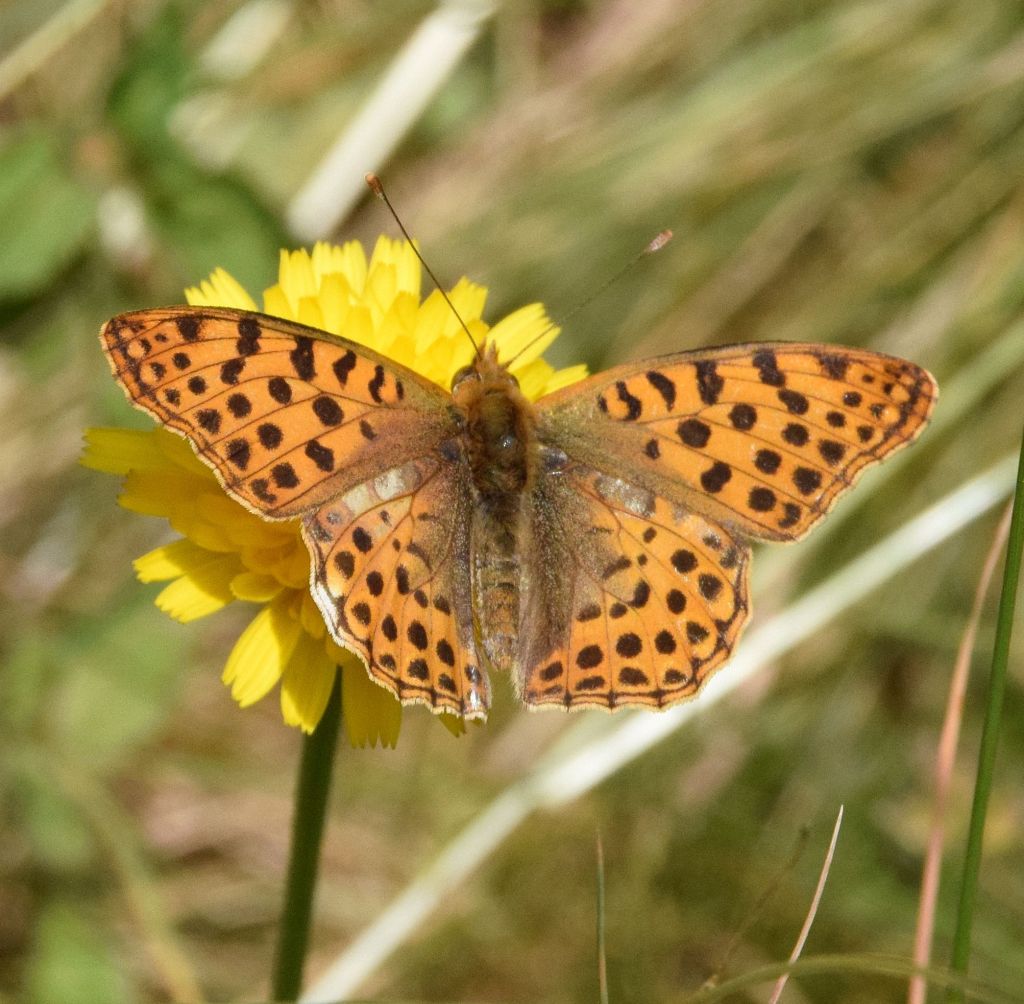
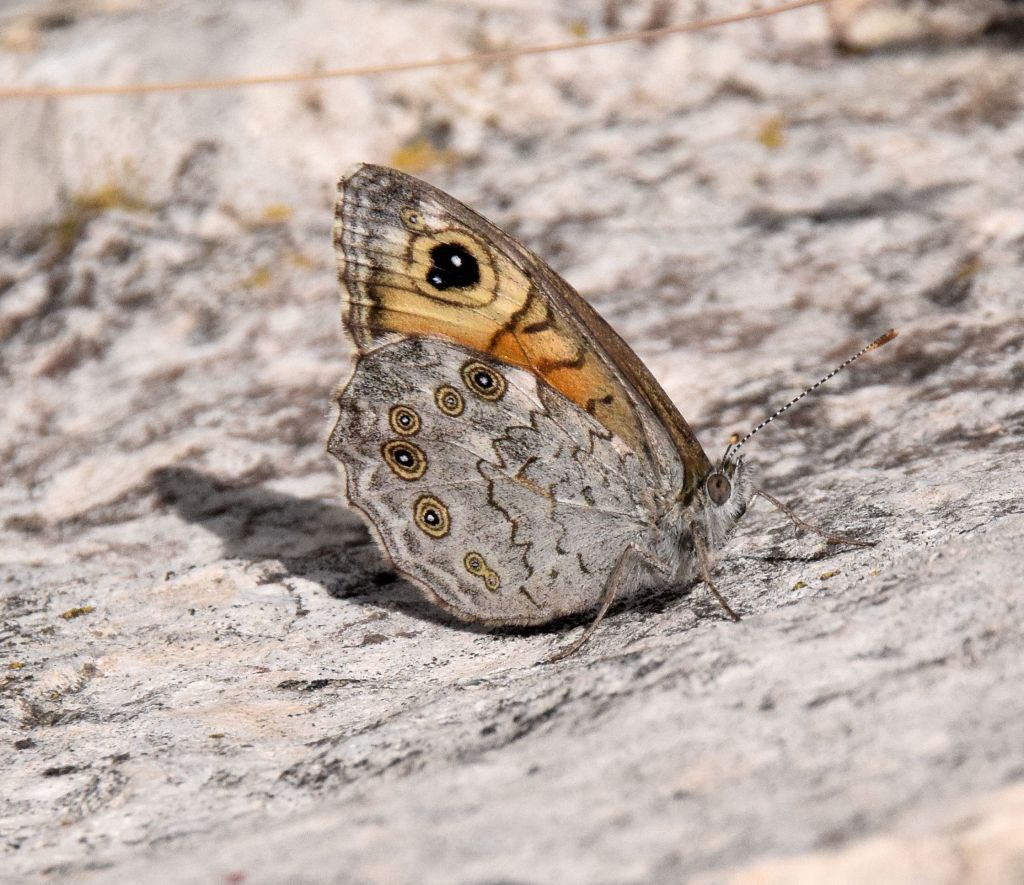
Whilst here I also gained a pleasing Orthoptera lifer, that unusually for this order I was able to identify. I believe these (below) are Ladder (or Large Mountain) Grasshopper that occurs across the Eurasian land mass in sub-Alpine and montane regions from July to September, especially in high-altitude meadows. Males of this medium-sized species grow up to 20mm long while females can reach 24 – 27mm, and like all grasshoppers the basic colouration shows considerable variation.
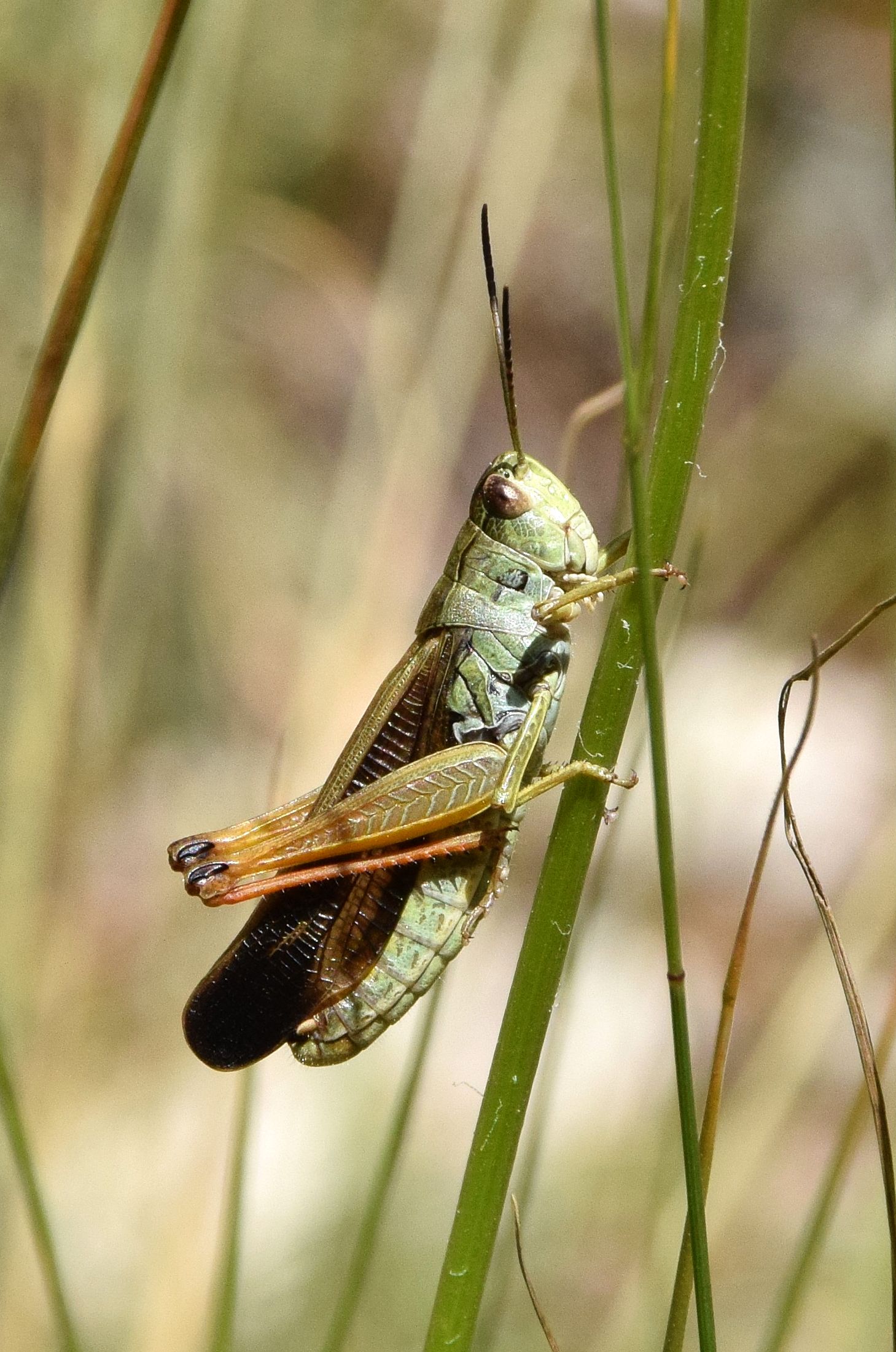
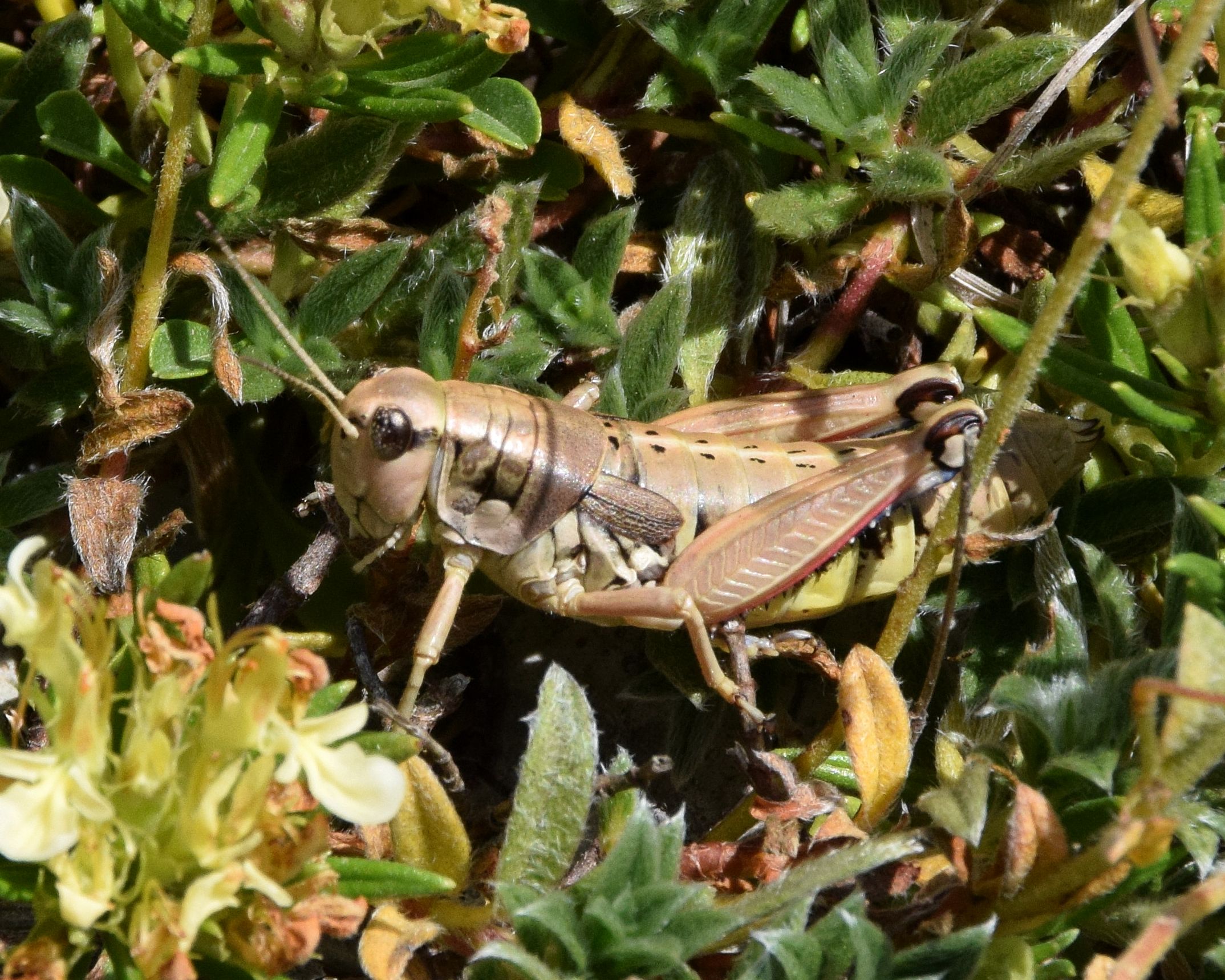
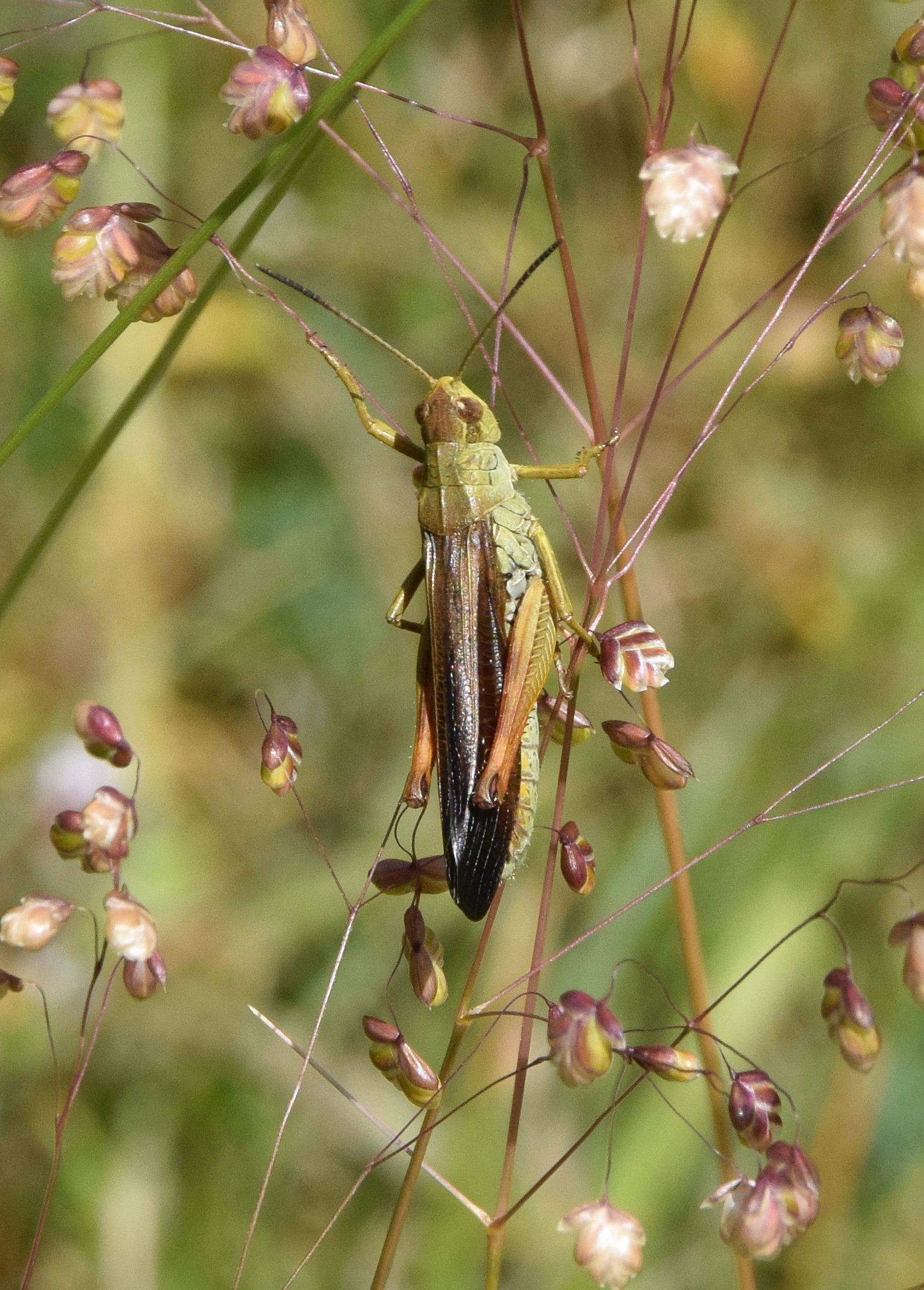
The full (recalled) butterfly list for these two days was: Scarce Swallowtail, Apollo, Black-veined White, Large White, Green-veined White, Clouded Yellow, Brimstone, Small Copper, Scarce Copper, Brown Argus, Turquoise Blue, Common Blue, Red Admiral, Painted Lady, Queen of Spain, Cardinal, Silver-washed Fritillary, High Brown Fritillary, Marbled Fritillary, False Heath Fritillary, Spotted Fritillary, Marbled White, Rock Grayling, Grayling, Great Sooty Satyr, Great Banded Grayling, Arran Brown, Meadow Brown, Small Heath, Pearly Heath, Large Wall Brown, Dingy Skipper, Small Skipper, Large Skipper – 34

